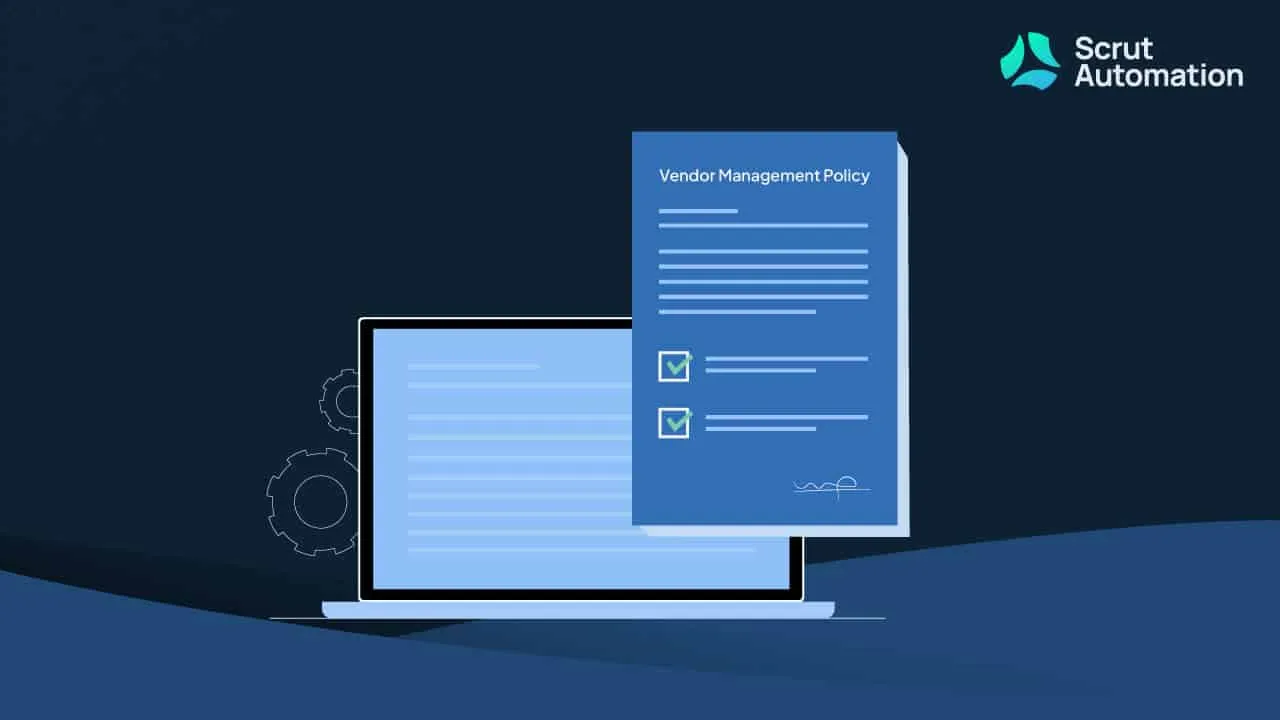Prepare for your SOC 2 audit with these questions

Businesses that handle sensitive customer data must be equipped with controls to protect it adequately to avoid data breaches. And one of the best ways to safeguard customer data is by meeting SOC 2 compliance standards.
But the question here is- whether your organization is ready for SOC 2.
Here are some helpful questions, recommendations, and best industry practices to help determine whether your organization is prepared for a SOC 2 audit.
But, before we dive deep into preparing for a SOC 2 audit, let's understand the basics of the SOC 2 report.
What is a SOC 2 report?
SOC 2 is a security compliance standard developed by the American Institute of Certified Public Accountants (AICPA). The service organizations receive and share their SOC 2 report with clients to demonstrate that their business's non-financial reporting controls are in place to secure the service provided.
To achieve SOC 2, you must implement Trust Services Criteria (TSC). TSC is a framework for designing, implementing, and evaluating information system controls and it includes security, availability, processing integrity, confidentiality, and privacy.
How to prepare for a SOC 2 audit?
A SOC 2 audit can be long-winded since it is both time and resource-consuming. Organizations must follow an entire systematic process to complete a SOC 2 report successfully. This guide will help you break down the SOC 2 process into four steps, from selecting the type of report to conducting the final assessment.
Step 1: Select a report type
Before starting the SOC 2 report process, decide what type of report your organization needs, a Type 1 or Type 2 report.
The primary distinction between the two is that a Type 1 report typically evaluates if the system controls are correctly designed, whereas a Type 2 report says if those controls function as intended.
A few questions may include:
- Has your organization had a SOC 2 examination before?
- Does your organization have a dedicated team to create and implement policies, procedures, and industry standards?
- Do your employees know their roles and responsibilities when enforcing controls?
- Do you track and communicate system changes?
If your answer to most of these questions is a “NOâ€, then we recommend you start with a SOC 2 Type 1 report.
Step 2: Define the scope
Plan and strategize systematically to define the scope. People, location, policies and procedures, and the technology stack your organization uses can impact the security of sensitive data. Start by determining which of the Trust Services Criteria (TSC) - security, availability, processing integrity, confidentiality, and privacy, you want to include in your scope.
A few questions may include:
- Which of the five Trust Services Criteria (TSC) will you test?
- What are the core services your organization provides?
- What's the actual timeline of the audit?
Step 3: Test controls
When preparing for a SOC 2 audit, developing the organization's internal controls is equally important. The internal controls will help in protecting information security and compliance risk management. These controls include:
Description and design: Write a complete description for each internal control you want to test and how it impacts the user operations.
A few questions may include:
- Which are the test controls you want to test?
- How will those controls affect user operations?
- Do these controls rely on third-party software? If yes, what controls do you have in place to prevent data breaches?
- Why and how are these controls important for users?
Risk assessment: It is performed to evaluate potential threats in the system and remediate them to protect the users against such threats.
A few questions may include:
- Do you know the risks associated with your system and controls?
- Have you identified the impact of these risks on your system?
- Do you have a remediation plan to mitigate risks?
- How often do you perform a risk assessment to identify these threats?
- How do you handle environmental risks?
Physical and logical access controls: Define who can access different files and folders in your system and add necessary permissions to protect the data.
Some helpful questions may include:
- Are there any physical or logical restrictions and controls in your organization?
- Do you have relevant access controls in place?
- Have you set permissions to users on roles and responsibilities?
Step 4: Trust Services Criteria (TSC)
SOC 2 compliance is based on Trust Services Criteria (TSC). They include security, availability, processing integrity, confidentiality, and privacy and are used to evaluate and report the suitability of the design and operating effectiveness of controls.
1. Security
Security controls are designed to include an array of risk-mitigating solutions, such as endpoint protection and network monitoring tools. The security trust criterion helps in protecting information throughout its lifecycle in an organization and protects the data from
- Unauthorized access
- Unauthorized disclosure
Some useful questions may include:
- How do you monitor and prevent intrusions and cyber-attacks?
- Do you have a list of procedures to handle incidents?
- How do you handle issues in your systems?
- Did you test and document the security procedures?
- How do you address unauthorized access?
2. Availability
Addresses whether systems include controls to support accessibility for operation, monitoring, and maintenance.
Some useful questions may include:
- Are your services available 24/7?
- Have you restricted your services from certain people?
- Do you have backup and recovery procedures in place?
- Do you have an action plan to handle service issues that affect your availability?
3. Processing integrity
Processing integrity focuses on data accuracy and the completeness of the end-to-end process to ensure applications function without delay, error, omission, or accidental data manipulation.
For example, a hospital system deals with the patient's blood type. It should ensure the information entered stays accurate across all the systems.
Some useful questions may include:
- Do your processing systems provide data to the users accurately and timely?
- Do you have a backup plan to handle system failures and issues? If yes, how?
4. Confidentiality
Confidentiality evaluates how organizations protect confidential information – limit access, storage, and use. It ensures that only authorized individuals can view sensitive information like legal documents or Personally Identifiable Information (PII).
Some useful questions may include:
- How do you handle and process confidential data?
- Is your data protected all the time?
- Have you assigned permission levels to avoid unauthorized access?
5. Privacy
Privacy assesses how, why, and when an organization shares information like name, address, email, or any other personal information.
Some useful questions may include:
- Is your data retention policy well-tested and documented?
- How are you processing and classifying personal data?
- Do you store any personal data? If yes, where do you store it, and how?
- How do you protect customers' personal information (PI)?
For example:
- If an organization stores data containing personal information, then security and privacy TSCs are a must to include.
- If the organization offers storage as a service, then security and availability TSCs must include.
Note: The SOC 2 checklist is described in a .xls or .pdf format. For example, the file names are mentioned as SOC 2 compliance checklist Xls or SOC 2 compliance checklist pdf.
Final word
AICPA does not provide clear guidelines with respect to the controls an organization must have in place to be SOC 2 compliant. What works for an organization might not work for others and vice versa. So, we recommend you get in touch with a compliance officer or work with a compliance automation company like Scrut to get started with SOC 2.
Scrut Automation is an innovative and radically simple Governance, Risk, and Compliance automation platform for growing startups and mid-market enterprises. With Scrut, compliance teams can reduce ~70% of their manual effort in continuously maintaining compliance towards SOC 2, ISO 27001, GDPR, PCI DSS, and privacy laws like HIPAA, GDPR, and CCPA. Schedule your demo today to see how it works.
Frequently Asked Questions (FAQs)
- What kind of anomaly alerts should my organization set up?
SOC 2 requires that you set up alerts for:
- Exposure or modification of data
- File transfer activities
- Unauthorized access
- What type of incidents must I prevent from complying with SOC 2?
Any incident that threatens the security, availability, processing integrity, confidentiality, and privacy of customer data is a big no-no from a SOC 2 perspective.
- Will I need a Type 1 or Type 2 report? Or both?
SOC 2 Type 1 and SOC 2 Type 2 reports are issued depending on your organization’s specific requirements and objectives. A SOC 2 Type 1 report evaluates if the system controls are correctly designed, whereas a Type 2 report says if those controls function as intended.
If you have time and budget constraints, starting with SOC 2 Type 1 report is good.


















